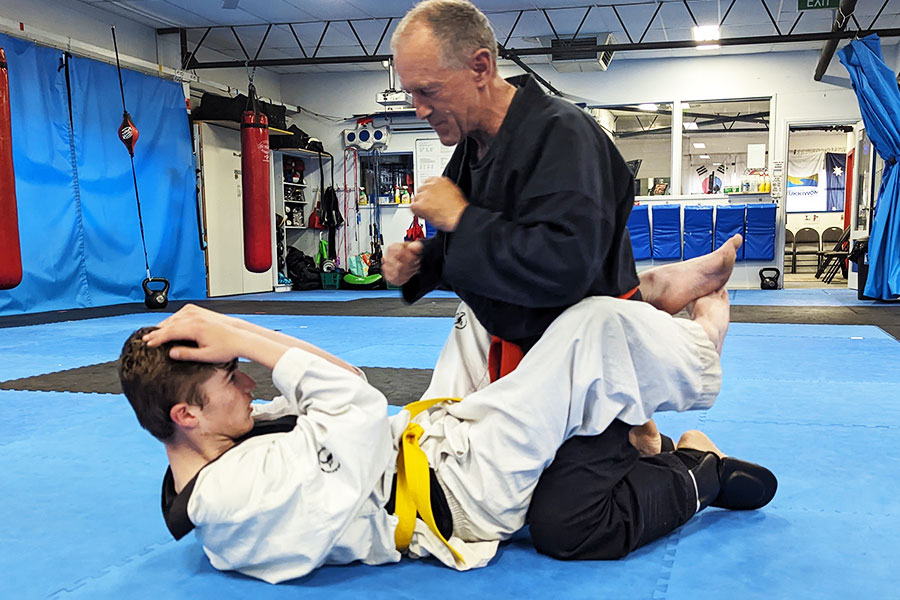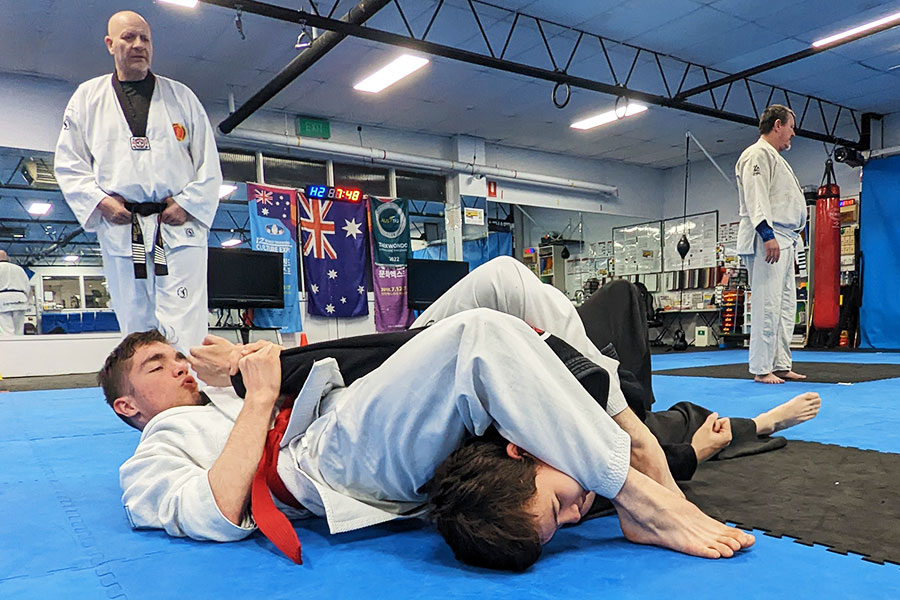Mixed Martial Arts
What is MMA?
The origins of mixed martial arts (MMA) can be traced back to ancient Greece, where the sport of Pankration was popular particularly among Spartans.
Pankration combined striking and grappling techniques and was an early precursor to modern MMA. However, the modern form of MMA gained prominence in the 1990s with the creation of the Ultimate Fighting Championship (UFC), which aimed to determine the most effective martial art in a real fight.
MMA fighters train in a variety of martial arts disciplines, including Boxing, Muay Thai, Brazilian Jiu-Jitsu, Wrestling, Judo, Karate, Taekwondo, and more. This diverse training allows them to be well-rounded in both striking and grappling.
Mixed Martial Arts (MMA) Curriculum
Please note: MTC Ringwood’s MMA program is our only program that requires you to train in at least two other martial arts with us. (Eg: Taekwondo & Boxing, or Boxing and Jiu Jitsu, etc). MTC Ringwood is proud and privileged to be able to offer multiple martial arts classes that you can take all under the one roof at a heavily reduced rate.
- Boxing fundamentals: Basic punches, footwork, head movement.
- Muay Thai techniques: Kicks, knees, elbows, clinching, and combinations.
- Kickboxing techniques: Incorporating kicks and punches with footwork.
- Striking drills: Focus mitts, heavy bag work, partner drills for accuracy and timing.
It is never too late to change yourself.
You can do great things regardless of your circumstances.
– Matt “The Immortal” Brown, MMA Champion
Benefits of Mixed Martial Arts



Dream. Believe. Create. Succeed.
Frequently Asked Questions
No, not at all. However, the MMA program is our only program that requires you to train in at least two other martial arts. (Eg: Taekwondo & Boxing, or Boxing and Jiu Jitsu, etc). MTC Ringwood is proud and privileged to be able to offer multiple martial arts classes that you can take all under the one roof at a heavily reduced rate.
Initially just a water bottle. After a short period of time however you will need a uniform (Gi) and protective equipment such as your shin & arm guards, elbow pads and mouth guard. You must wear a rashie or t-shirt underneath your dobok or gi (martial arts uniform). It is required to be worn clean and every one smelling nice (personal hygiene is being respectful to yourself and others).
MMA like all martial arts is safe as long as you follow proper technique, wear proper gear, and train with a qualified instructor. And work within your individual range leave your ego at the door and empty your cup. Smile, sweat and have fun.
Our MMA classes do involve ‘rolling’ which is a form of sparring, particularly in Brazilian Jit-Jitsu. That escalates over time with skills and experience.
The general age is 10 years and up, however there may be an exception depending on maturity and experience level.
This is highly dependent on how often you train in MMA as well as your other martial art classes. Our ranking system matches an international ranking system and is based on an individual’s dedication and training. It’s also worth noting that MMA training is a continuous process, and even experienced fighters continue to learn and improve throughout their careers.
It is possible to receive your black belt in MMA in around 6 -7 years (conditions apply) and the syllabus covers boxing/kickboxing, Muay Thai, take down defence, wrestling, ground and pound, and BJJ techniques equivalent to a most blue belt in BJJ curriculum. However, be mindful that each martial art style is different, which also means that the time it takes to get a black belt in various martial arts is also different. Getting a black belt in MMA does not necessarily mean you are a master of all martial arts.






